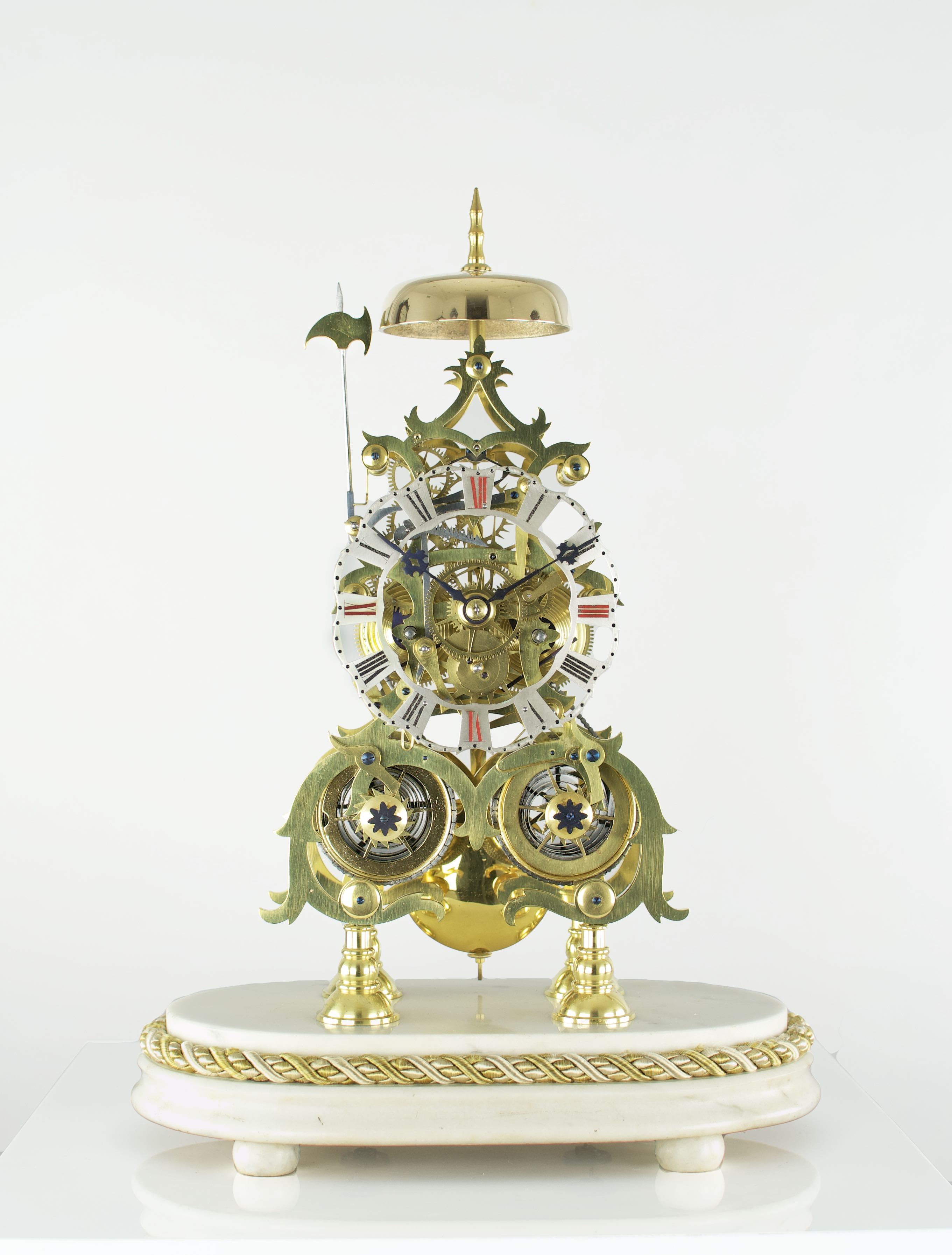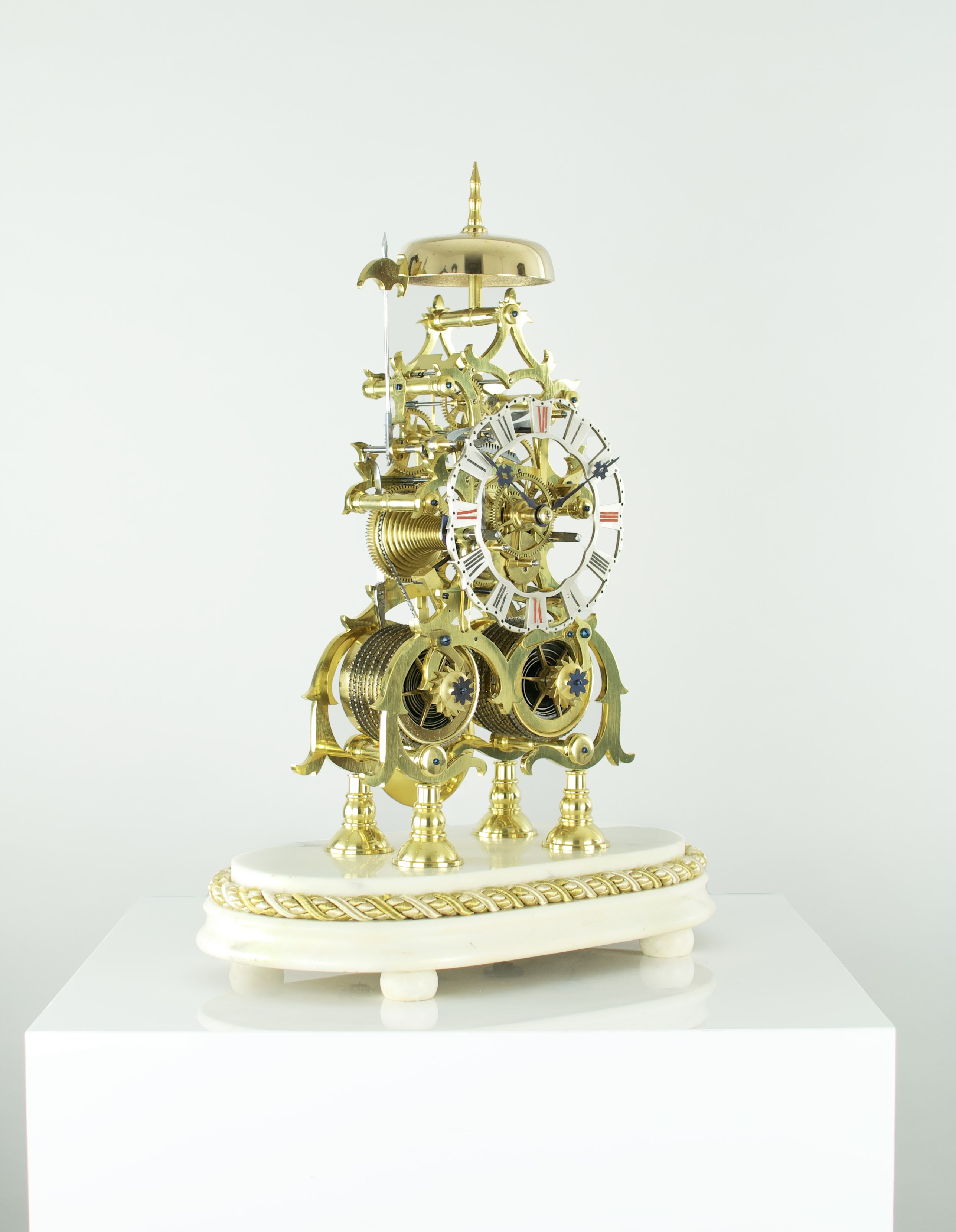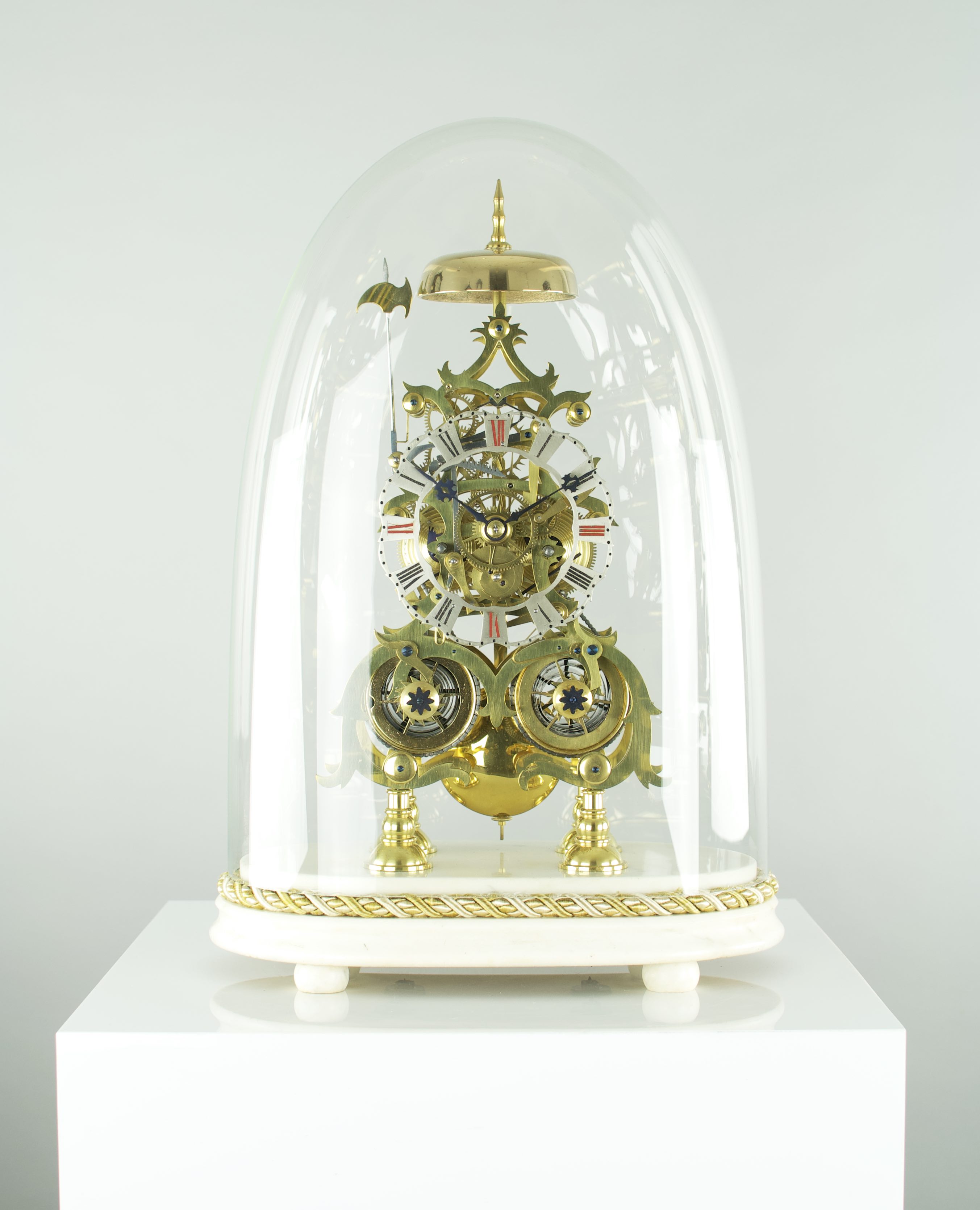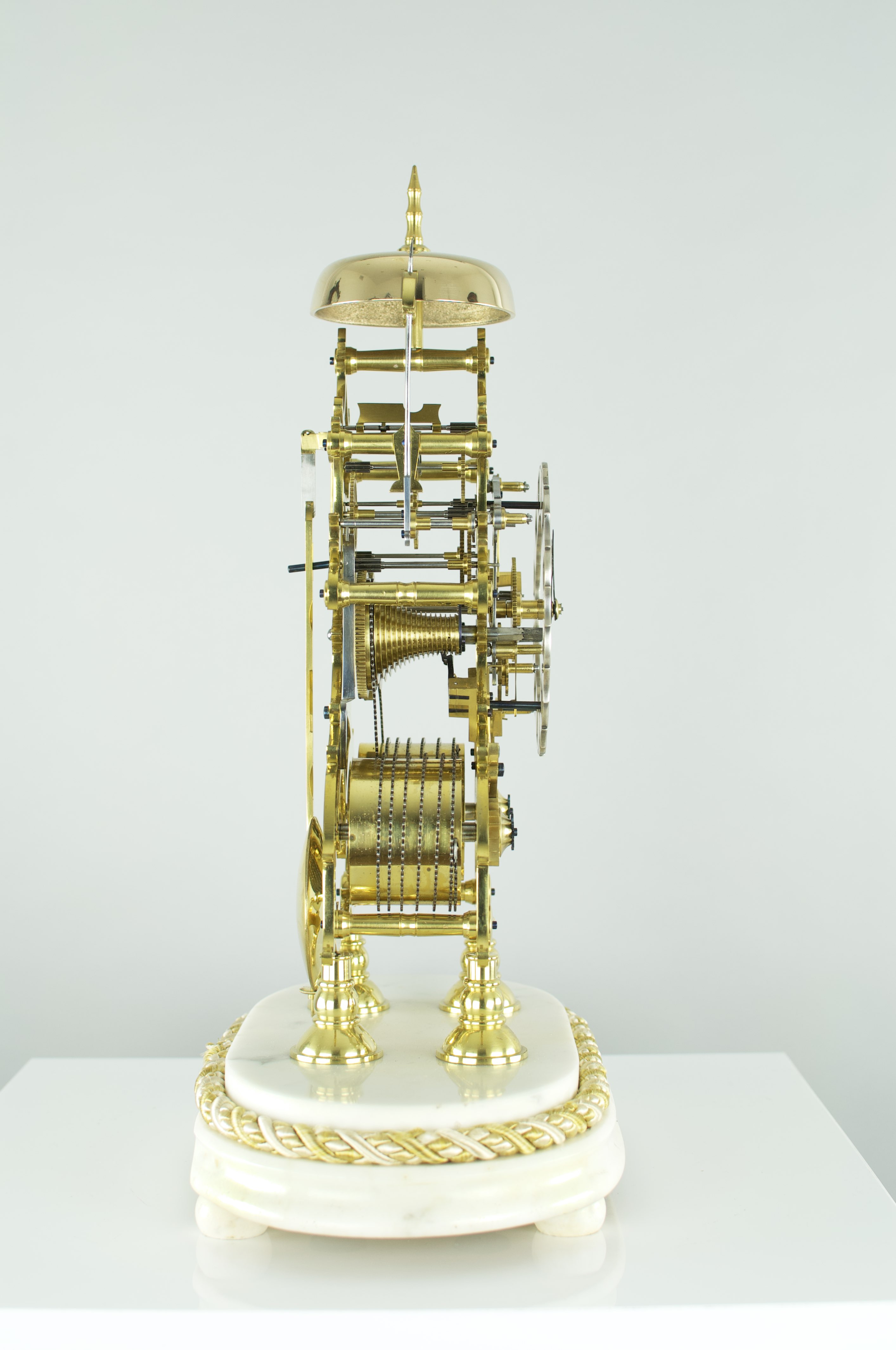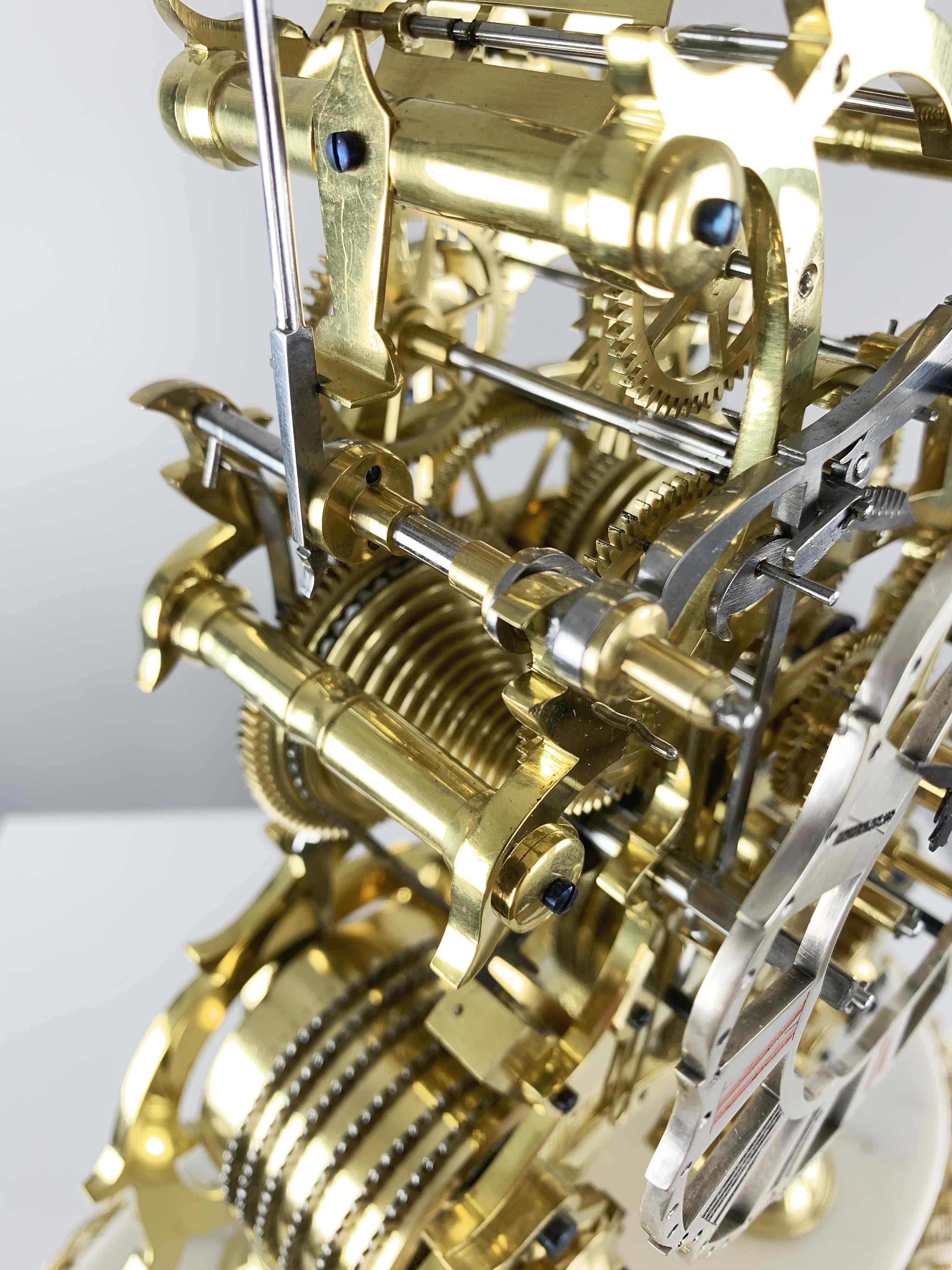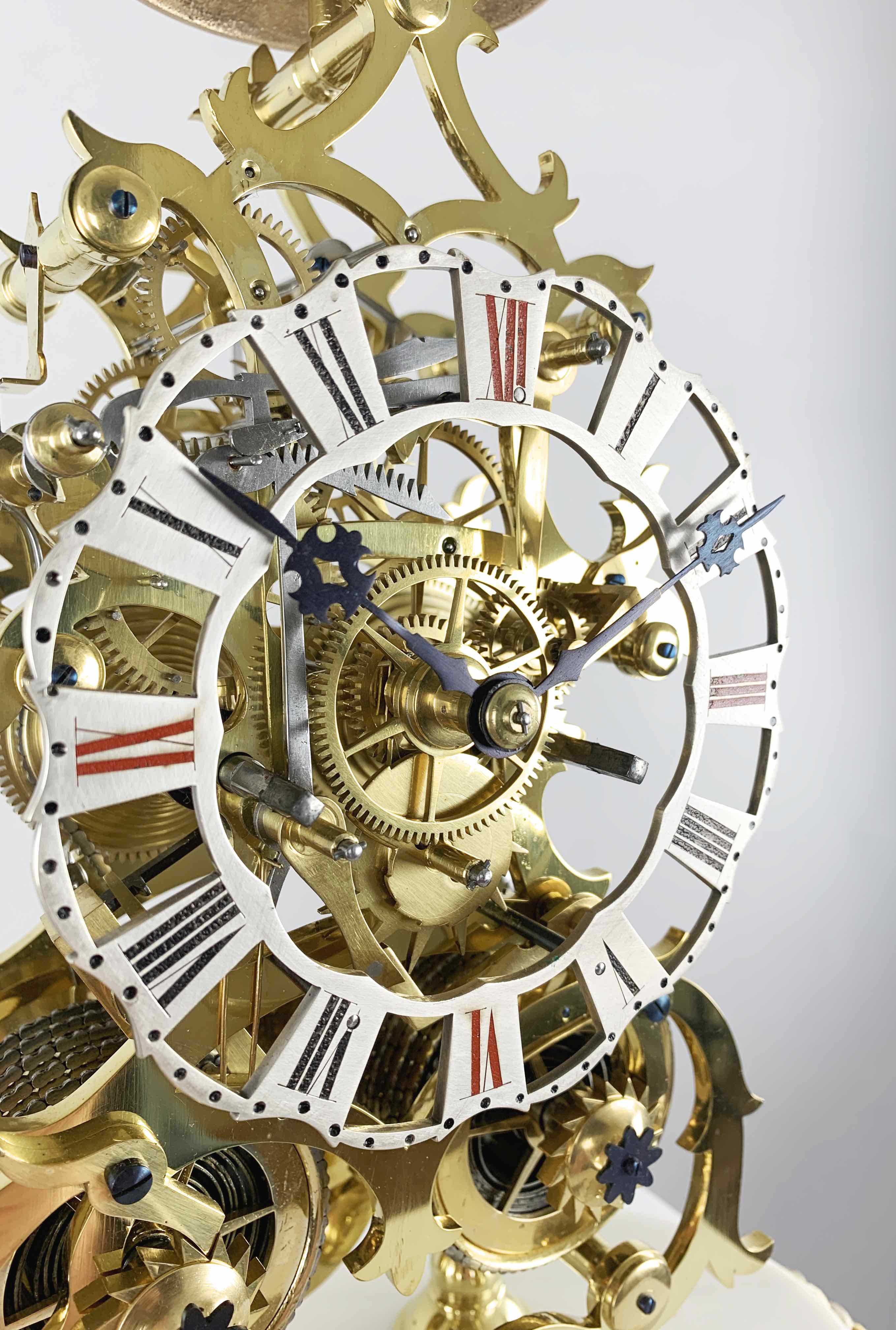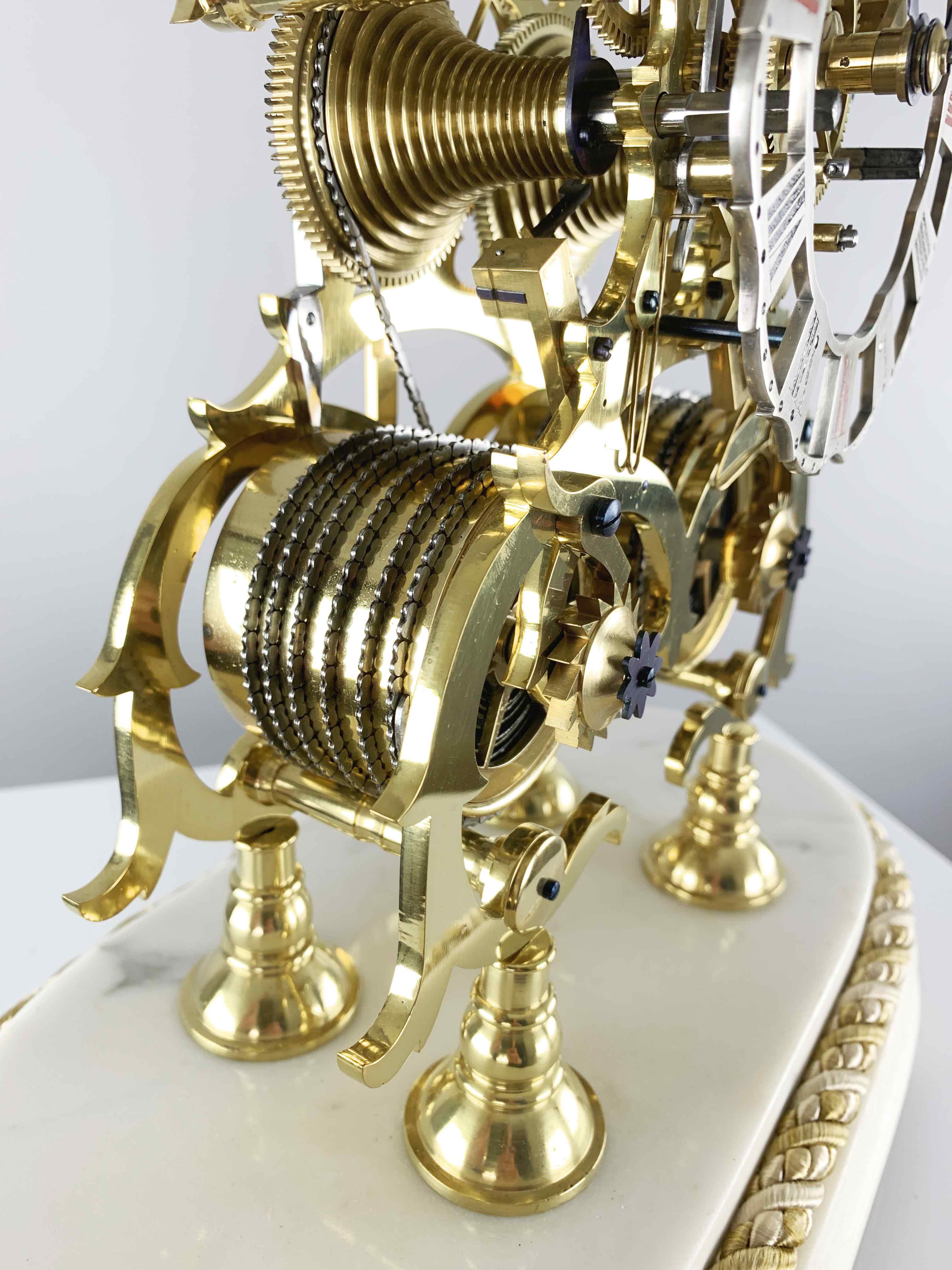Telephone 07899 751446 E-mail
enquiries@storyclocks.co.uk
A fine quality double fusee skeleton clock, c.1840-5
- Maker: Attributed
to James Edwards of Stourbridge
- Date: 1840 - 1845
- Height: 43cm
/ 46.5cm (With the glass dome) Width: 31cm Depth: 19cm
- Price: Sold
A fine quality double fusee skeleton clock with glass dome, attributed to James Edwards of Stourbridge c.1840-5
The eight-day, chain driven twin fusee movement with beautifully finished heavy brass scroll plates united by six turned and tapered pillars with blued-steel screws.
Finely crossed six-spoke wheel work on steel arbors and pivots running into bushed oil sinks, skeletonised barrel covers with blued steel decoration.
The rack striking train is fully exposed with visible snail and star wheel.
Fully striking the hours with axe-head hammer on a centrally mounted cast ‘bell-metal’ bell.
Anchor recoil escapement and a lead weighted brass bob pendulum.
Shaped edge skeletonised silvered and engraved chapter ring with shield shaped Roman numerals cartouches and outer minute ring. The Roman numerals with alternating red and black wax infill.
Finely cut blued-steel hands.
The clock stands on four substantial brass feet, beneath a stepped and moulded oval white marble base with four bun feet.
Brass heart shaped fusee winding key.
In excellent fully restored condition. No cracks or damage to the glass dome.
The scroll shaped framework to the clock is typical of the design used by James Edwards of Stourbridge and can be safely attributed to his workshops.
All of our clock movements are restored by our horologist who works exclusively for us.
Our horologist is a Fellow of the British Horological Institute (FBHI), having 35 years of full time professional engagement in the repair & restoration of clocks, watches, music boxes & barometers. He was the recipient of the 1977 Worshipful Company of Clockmakers Bronze Medal.
Please contact us for further details and delivery information.
James Edwards is recorded as working in Stourbridge, Worcestershire from before 1829, when he is known to have been in the High Street, until 1853 by which time he is known to be working at Hagley Road. by 1860 all records of him stop so presumably he had ceased trading or died at this point. Edwards was probably the first of the skeleton clock makers to produce top quality pieces on a fairly large scale, pre-dating both Evans of Handsworth and Smiths of Clerkenwell by at least ten years. * Note. Reference Derek Roberts, Skeleton Clocks Britain 1800-1914; Antique Collectors Club 1987; pages 173-177.
